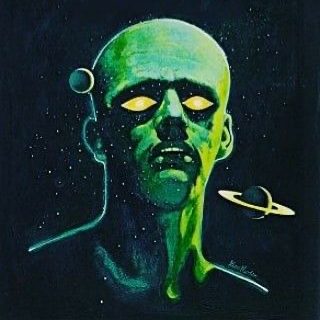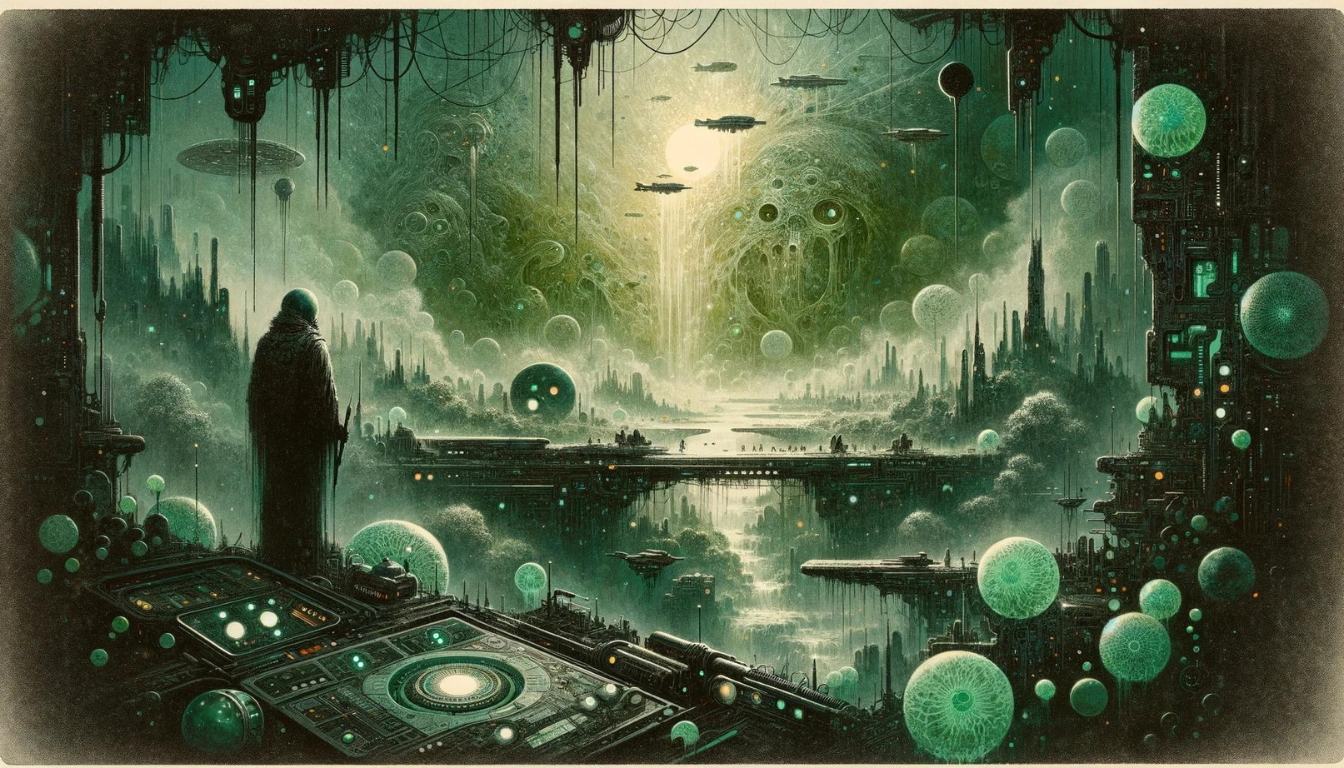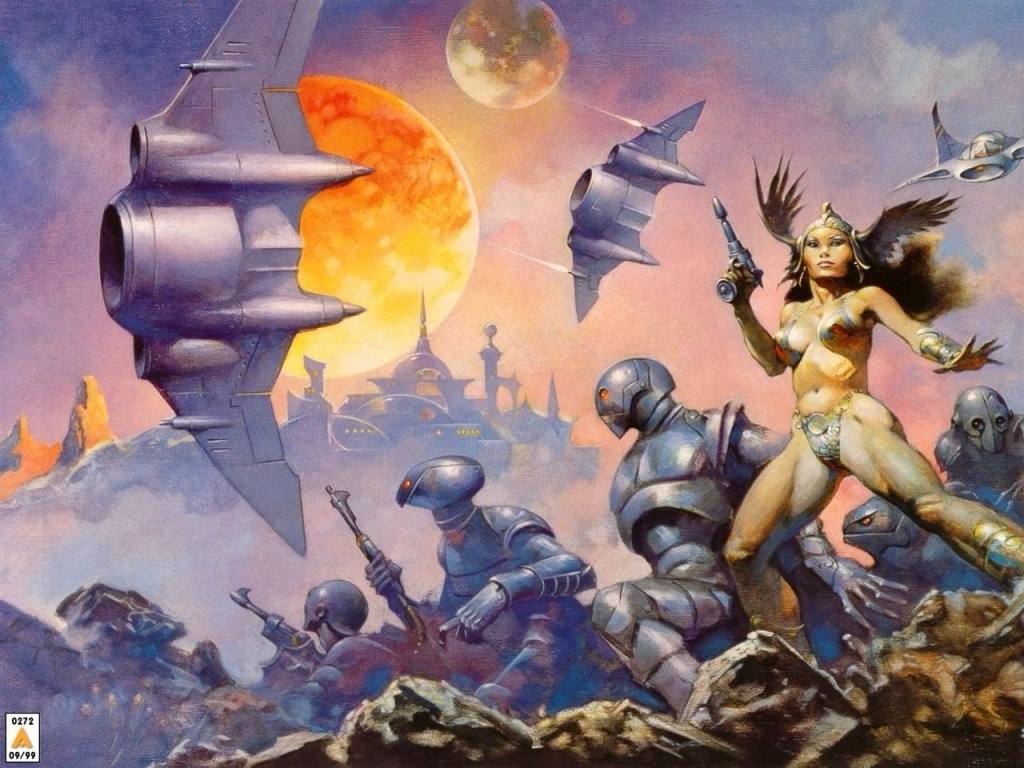Frank Frazetta, a name that resonates with echoes of distant worlds and timeless fantasy scenes, stands as a towering figure in the landscape of fantasy and science fiction art. While his contributions to fantasy are widely celebrated, his science fiction artwork, beginning in the 1950s with iconic Buck Rogers covers and evolving through the decades, remains a testament to his unparalleled talent and vision. This post embarks on a journey through the cosmos of Frazetta’s imagination, exploring the depth and breadth of his science fiction artistry.

From Buck Rogers to Beyond: The 1950s Launchpad
The 1950s marked the dawn of Frazetta’s venture into the science fiction genre. Tasked with breathing visual life into the adventures of Buck Rogers, a hero traversing the futuristic landscapes of the 25th century, Frazetta’s work captivated readers with its bold colors, dynamic compositions, and an uncanny ability to capture motion and emotion. His Buck Rogers covers for “Famous Funnies” would lay the foundation for a career replete with visions of the future.



The 1960s: Expanding Horizons
As the space race captured the world’s imagination, Frazetta’s art evolved in tandem with the era’s spirit of exploration. His illustrations during this period depicted a broader universe, teeming with alien landscapes, mysterious creatures, and heroic figures embroiled in epic struggles.


Notably, his work for the covers of Edgar Rice Burroughs’ science fiction novels, including the John Carter of Mars series, showcased his skill in blending the fantastical with the scientifically plausible, creating worlds that were as believable as they were breathtaking.

The 1970s: A New Dimension of Science Fiction Art
The 1970s saw Frazetta reaching the zenith of his artistic powers, with his science fiction work gaining a complexity and depth that mirrored the decade’s tumultuous social and technological changes.

This period was marked by Frazetta’s prolific output on movie posters, which included titles such as “Mrs. Pollifax-Spy” (1971), “Luana” (1973), and “The Gauntlet” (1977). His work continued to solidify his reputation as a leading figure in fantasy and science fiction art. This included his covers for the paperback editions of “Battlestar Galactica” (1978), which stood out as iconic. These pieces, characterized by their dramatic lighting, intricate detail, and palpable tension, underscored Frazetta’s ability to convey narrative and emotion, pushing the boundaries of science fiction art.



The 1980s and Beyond: Legacy and Influence
Continuing to work into the 1980s, Frazetta’s science fiction art, though less prolific, remained impactful. His paintings during this period reflected a mastery of the medium and a visionary approach that influenced a generation of artists and illustrators.

Frazetta’s legacy in the science fiction realm is not only in the images he created but in his approach to storytelling through art. His work continues to inspire artists, writers, and filmmakers, ensuring that his visions of the future and the unknown remain as relevant as ever.

The Enduring Allure of Frank Frazetta’s Science Fiction Art
Frank Frazetta’s contribution to the art of science fiction cannot be overstated. Through his dynamic compositions, exquisite detail, and profound imagination, he invited viewers to explore worlds beyond the confines of reality. The science fiction art of Frank Frazetta transcends time, reminding us of the power of creativity and the endless possibilities that lie in the unknown.

As we wrap up our journey through the science fiction realms of Frank Frazetta, I urge you to explore on your own, and track down more of his masterpieces. Discover the stories behind each painting, the characters that live within his worlds, and the legacy that continues to inspire.

I hope you join us again on Fear Planet as we ceaselessly explore the vast realms of science fiction art. Don’t forget to subscribe to the blog for more upcoming interstellar adventures in art and storytelling.





Leave a comment